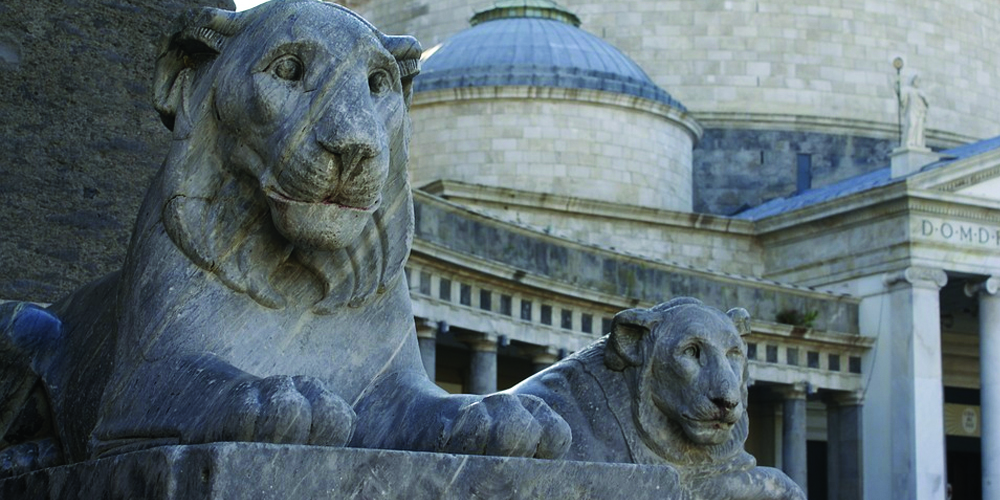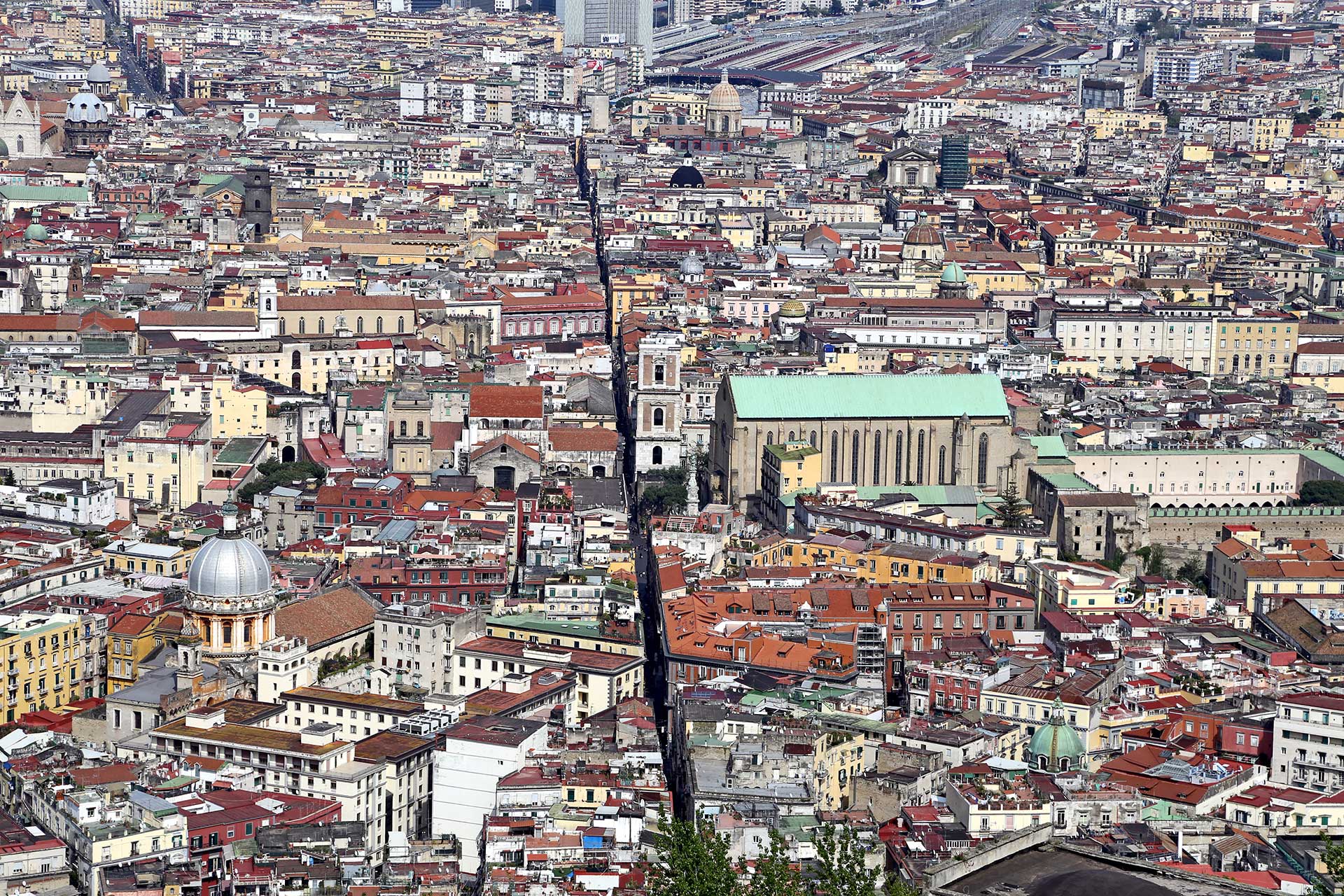The historic center of Naples
The historic centre of Naples hides priceless beauties in every corner. Between its alleys, history and tradition mix in a union that makes this place unique. Also recognized as a UNESCO World Heritage Site, the Neapolitan historic centre is to be explored.
Let's find out together what are the best 5 things to see in the historic centre of Naples.


The way of Spaccanapoli and its decumani
One of the must-see places in the historic centre of Naples is Spaccanapoli. One of the longest streets in the centre that divides the ancient city in almost two. Spaccanapoli is the lower decuman of the ancient city. Initially, it started from Piazza del Gesù and went up to the Duomo but with the arrangement of the eighteenth century the road stretches and crosses several neighbourhoods.
Starting from the Spanish quarters you get to Forcella, passing through the various toponyms of the streets that make it up you get some of the beauties of the whole centre. Places full of history overlook this ancient road from the church of Santa Chiara to that of the new Jesus, passing through the various noble buildings such as Palazzo Venezia and Palazzo Carafa, all surrounded by squares of great importance such as Piazza del Gesù, Piazza San Domenico Maggiore and Piazzetta Nilo.
The beauty of underground Naples and the Bourbon gallery
The subsoil of Naples is always alive and has preserved the history of the city for millennia. In fact, the city that we admire and know today stands on what has the appearance of being a real underground city. In fact, Naples stands on a large tuffaceous block that dug to obtain building material, over the centuries has created real underground caves, used since ancient times to create systems of aqueducts, cisterns and underground avenues, giving life to what is today we call underground Naples.
Underground Naples is a mystical place, going down about 40 meters below the current city level you enter a place where all Spatio-temporal conception is lost, almost as if passing through a portal that transports us back through the centuries. Particularly appreciated are the remains of the Greek-Roman theatre, located below the current complex of buildings in the historic centre, and which can be reached through a trap door, under the bed of a private home, a somewhat unusual way of visiting a place so old as to make it even more impressive.
Different speech for the Bourbon Gallery which was always dug out of the tuff, but on the orders of King Ferdinand II of Bourbon who wanted a quick escape route that connected the royal palace to Piazza Vittoria.
In recent years, underground Naples has been used for various functions, above all that of an anti-bombing refuge during the two great world wars.
The Royal Palace of Naples: the frame of Piazza del Plebiscito
On the edge of the ancient city, there is a place that made the history of Naples: Piazza del Plebiscito. Known initially as Largo di Palazzo, after the construction of the majestic Royal Palace, Piazza del Plebiscito is one of the largest squares in Italy, as well as one of the most beautiful. This is the name of the plebiscite which sanctioned the union of the Kingdom of the Two Sicilies to the Kingdom of Sardinia in 1860.
Fenced by 4 buildings of fine workmanship, it has an area of ââ25,000 square meters. The Palazzo Reale and the church of San Francesco di Paola with its magnificent exedra of Bernini's style stand out among the four buildings. The royal palace was built on a project by Domenico Fontana who decided to turn the main front not to the ancient city but to a large city open space so as to deliver to Naples not only a large building with an imposing facade but also a large place that had made history. The large building built between the seventeenth and nineteenth centuries has also undergone major changes due to the interventions of great architects of the calibre of Luigi Vanvitelli and Gaetano Genovese. The 169-meter façade had already been built in 1616 with the overlap of three classical orders which recalled the Renaissance manner.
In front of the Royal Palace stands another pivotal point of the Neapolitan artistic heritage, the church of San Francesco di Paola, which with its collonaded exedra involves a scenic front that few other cities can boast.
A castle in the center of Naples: the Maschio Angioino
Although placed on the edge of the ancient city, the Maschio Angioino is a key element of the historic centre of Naples. One of the most beautiful castles in the city and in southern Italy, built-in 1200 by Carlo I d'Angiò is a real cornerstone of Neapolitan and Italian history, so much so that over the years many high-profile historical figures have stayed in this castle, from various Neapolitan and Italian kings, passing through the likes of Giotto, Petrarca and Boccaccio.
The castle was erected on the port of Naples, disembowelling several convents and other buildings that are coming to light during the excavations of the new underground line in Piazza Municipio. Particularly of great architectural and cultural interest is the large triumphal arch carved at the entrance to the castle, built under Aragonese domination. In Naples, it is also known as Castel Nuovo to distinguish it from other castles already existing at the beginning of the 1200s, namely Castel dell' Ovo and Castel Capuano.
